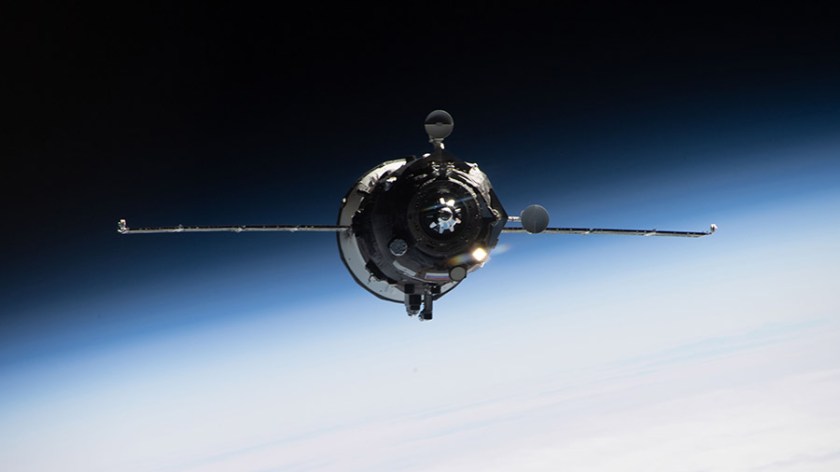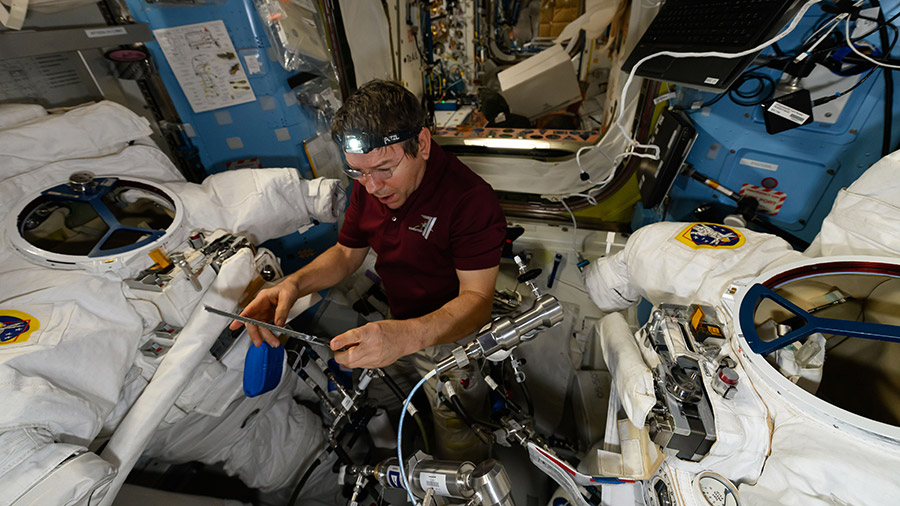
The Expedition 71 crew continues gearing up for a trio of spacewalks while a cargo craft packed with food, fuel, and supplies orbits Earth headed toward the International Space Station. Back on Earth, two astronauts are counting down to their launch to the orbital lab aboard Boeing’s Starliner spacecraft.
Three NASA astronauts spent Thursday checking out a spacesuit ahead of a series of spacewalks planned to take place in June. Flight Engineer Tracy C. Dyson began her day in the Quest airlock powering up one spacesuit and checking out its life support and communications components. Afterward, she installed batteries on the suit’s jetpack, a safety device that a spacewalker would use to maneuver back to the space station in the unlikely event they became untethered from the orbital outpost.
Dyson was assisted by fellow crew members Mike Barratt and Jeanette Epps during the spacesuit checks. The duo also reviewed standard spacewalk procedures such as suiting up, exiting and entering Quest, safety steps, and communication protocols. NASA will announce the upcoming spacewalks for maintenance and science soon in a media advisory and a televised news conference.
NASA Flight Engineer Matthew Dominick started his day printing the spacewalk procedures his crewmates would later review. Next, he gathered emergency hardware and prepared the gear in advance of the arrival of two new crewmates planned to arrive on Sunday. Afterward, Dominick inspected and cleaned module hatches then set up wearable biomedical gear to monitor an astronaut’s heart activity.
Meanwhile, NASA astronauts Butch Wilmore and Suni Williams are at Kennedy Space Center in Florida preparing for their launch to the space station set for 12:25 p.m. EDT on Saturday. The duo will lift off for Boeing’s Crew Flight Test inside Starliner atop the Atlas V rocket from United Launch Alliance. The experienced crew will take a daylong ride to the space station and dock to the Harmony module’s forward port at 1:50 p.m. on Sunday.
NASA TV will broadcast the mission live on the NASA+ streaming service via the web or the NASA app. Launch and docking coverage also will air live on NASA Television, YouTube, and on the agency’s website. Learn how to stream NASA TV through a variety of platforms including social media.
In the Roscosmos segment of the station, cosmonaut Nikolai Chub continued researching the ability to 3D print tools in microgravity. Expedition 71 Commander Oleg Kononenko completed his 24-hour heart and blood pressure monitoring session then conducted a photographic inspection of windows inside the Zvezda service module. Flight Engineer Alexander Grebenkin also spent his shift inside Zvezda performing routine maintenance on the module’s air conditioning system.
Learn more about station activities by following the space station blog, @space_station and @ISS_Research on X, as well as the ISS Facebook and ISS Instagram accounts.
Get weekly video highlights at: https://roundupreads.jsc.nasa.gov/videoupdate/
Get the latest from NASA delivered every week. Subscribe here: www.nasa.gov/subscribe









